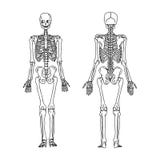
The hand consists of the wrist, palm and fingers. Movements of the hand are controlled by muscles in the forearm (extrinsic muscles) as well as muscles within the hand itself (intrinsic muscles). Anatomical terms describing movement. The movements of the hand (and of other body structures) are usually described in anatomical terms.

Each hand contains distinct bones that give the hand an incredible range and precision of motion. The forearm’s ulna and radius support the many muscles that manipulate the bones of the hand and wrist. Learn anatomy of the hand and wrist bones with this easy mnemonic memory trick.
You have phalanges, metacarpals, and carpals in each hand. The carpals are the hardest bones to learn, because they have unusual names. Whereas anatomy is about structure, physiology is about function. Human physiology is the scientific study of the chemistry and physics of the structures of the body and the ways in which they work together to support the functions of life.

Much of the study of physiology centers on the body’s tendency toward homeostasis. Do you know the difference between the study of anatomy and that of physiology ? Physiology is the study of the function of body parts and the body as a whole. Some specializations within each of these sciences follow: Gross (macroscopic) anatomy is the study of body parts visible to the naked eye, such. Get introduced to the major organ systems of the human body!
You’ll learn some general anatomy (a roadmap of your body), learn how the arm bone actually connects to the shoulder bone, and how the different organs work together to keep you alive. In Elementary Biology, you learn that structure, even at the level of molecular biology, is directly tied to function. This introduction to anatomy (what parts make up the hand ) and physiology (how the hand works) will aid nail technicians in performing professional manicure services, as well as understanding conditions affecting the hands.
The important structures of the hand can be divided into several categories. The upper extremity is a term used to define the upper limb. This includes the shoulder, arm, forearm, wrist and hand. Learn the hand wrist anatomy physiology with free interactive flashcards. Choose from 5different sets of the hand wrist anatomy physiology flashcards on Quizlet.
Over one year, that would equal 1000liters or 2. In order to understand how that happens, it is necessary to understand the anatomy and physiology of the heart. Studying anatomy and physiology involves remembering lists of terms, functions, and processes. You can take just the first letter or two of each word from a list to create an acronym. Occasionally, you can go one step beyond the acronym to a clever little thing called a mnemonic device.
Animated Text Narrations and Quizzes to Explain the Structures and Functions of the Human Body Systems. In order to provide exquisite care and understand the inner workings of the human body, anatomical terminology is a necessity. Only humans have the ability to bring our thumbs across the hand to connect with our ring and pinkie fingers. Division B and Division C will both typically concentrate on three systems, which change each year. Topics may include diseases in those systems as well as the general anatomy and function of each system from the cellular to the.
A hand is a prehensile, multi-fingered appendage located at the end of the forearm or forelimb of primates such as humans, chimpanzees, monkeys, and lemurs. A few other vertebrates such as the koala (which has two opposable thumbs on each hand and fingerprints extremely similar to human fingerprints) are often described as having hands instead of paws on their front limbs. The modest size and weight of the heart give few hints of its incredible strength. The heart has four hollow chambers, or cavities.
Test your knowledge for free now!
No comments:
Post a Comment
Note: Only a member of this blog may post a comment.